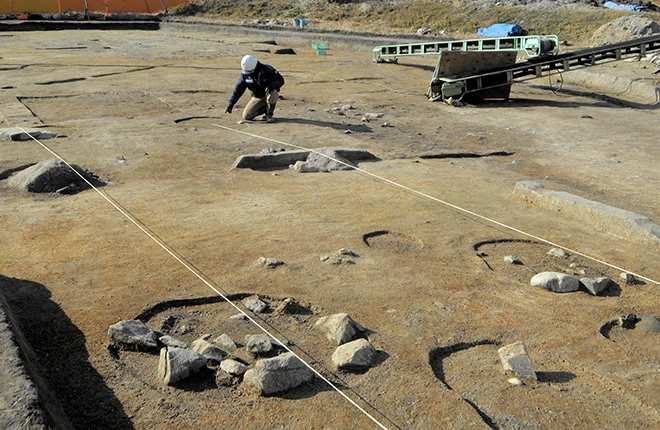Researchers have made a groundbreaking discovery at the Yamashiro Kokubunji Temple site. They believe they have found one of the largest ancient cafeterias from the Nara Period (710-784). The Kyoto Prefectural Board of Education announced these findings on February 4. This announcement highlights the historical significance of the site.
Historical Context of Yamashiro Kokubunji Temple
The remains originally served as a dining area for priests. They are located at the site of Yamashiro Kokubunji Temple, which Emperor Shomu (701-756) established. The emperor commissioned the construction of several Kokubunji provincial temples to promote Buddhism across Japan.
Architectural Features of the Temple Grounds
Yamashiro Kokubunji Temple was built after the imperial capital moved to Kuni-kyo, established by Shomu. The temple grounds cover approximately 275 meters from east to west and 330 meters from north to south. Previous archaeological studies uncovered various structures, including a hall and a pagoda. However, the recent findings are particularly noteworthy.

Recent Discoveries at the Site
In the latest study, researchers found large foundation stones, each about 70 centimeters in size. They also discovered the holes left behind when workers removed these stones in the northeastern section of the temple grounds. These findings suggest a significant building measuring 38.1 meters from east to west and 10.8 meters from north to south.
Additionally, earlier excavations revealed a corridor extending south from the newly discovered area. This discovery leads researchers to believe that the cafeteria connected to other structures within the temple complex. This architectural layout aligns with similar findings at the Todaiji and Saidaiji temples in Nara, where cafeterias and connecting structures also appeared.
Expert Insights on the Findings
Mahito Uehara, a retired professor of archaeology at Kyoto University, noted that the recent remains likely belong to buildings used as kitchens or storage areas. He emphasized the significance of this discovery, stating that it represents the first instance in Japan where researchers can reconstruct the cafeteria layout of a Kokubunji temple.
The Significance of the Kuni Palace
The historical context of the site adds to its intrigue. Emperor Shomu built the Kuni Palace to serve as a capital during a tumultuous period marked by epidemics and warfare. After relocating from Heijokyo (Nara) to present-day Mikanohara, Kamo-cho in 740, the new capital was abandoned just four years later. Subsequently, the site of the main palace hall became Yamashiro Kokubun-ji Temple, which utilized the former palace hall as its main hall.
Today, the remains of Yamashiro Kokubun-ji showcase the stone foundations of a pagoda. Experts believe this pagoda originally stood seven stories high based on the size of the main hall and foundation stones. This discovery enriches our understanding of the temple’s historical significance and highlights the architectural advancements of the Nara Period.
Image Credit: Yamashiro Kokubunji Temple, Naracity





